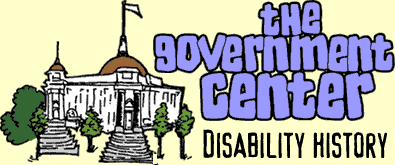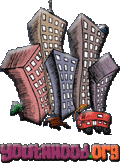

|
|
|
|

|
Understanding the Medical Model
People with disabilities are sick or broken; we can fix them!
- In the mid 1800s, doctors and others became interested in finding a “cure” for many disabilities. and the medical model of disability was born. The medical model, which is still alive today, is the belief that people with disabilities need lots of treatment and that they belong in places like institutions or nursing homes where doctors and other specialists can “fix” them. This picture is an example of the many messages received by people with disabilities that they were somehow broken and needed to be fixed.
- Until the early 1970s, the medical model kept many children and youth with disabilities out of school and out of their community. There was no need to make buildings wheelchair accessible or provide sign language interpreters at important meetings, because people with disabilities were hidden away and didn’t have an opportunity to do many things.
- When people believe in the medical model and think that people with disabilities must either be taken care of or fixed, they also often believe that youth with disabilities can’t do things that youth without disabilities take for granted, such as attending classes in a regular classroom, playing sports, or having friends. For example:
- The medical model sees people with disabilities as very fragile. This means they must not try anything that is at all dangerous for fear they might get hurt.
- The medical model also assumes that adults with disabilities probably cannot get good jobs, live independently, fall in love, or do many other things that adults without disabilities are expected to do in their lives.
Try a Youthhood activity:
|
|
|
|
|
|
|

















